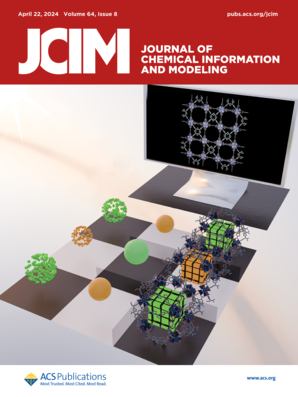Methyl•••Methyl Interactions in Proteins: Insights from Structural and Computational Studies.
IF 5.6
2区 化学
Q1 CHEMISTRY, MEDICINAL
引用次数: 0
Abstract
The low affinity of nonpolar groups for water gave birth to one of the significant supramolecular forces known as hydrophobic interaction as early as 1937. While the precise origins of this phenomenon remain debated, the significant role of London dispersion forces in stabilizing nonpolar complexes is well-established. This article presents a comprehensive investigation of the nature and strength of CH3•••H3C (methyl-methyl) interactions within the amino acid residues of proteins, employing a combination of quantum mechanical calculations and custom Python code. Analysis of isolated mimetic dipeptide models reveals that these interactions are weak, with interaction energies ranging from -2.40 to -6.94 kJ/mol. These energies are primarily attributed to dispersion forces, supplemented by a minor electrostatic contribution. Even though CH3•••H3C interactions are weak, the cumulative effect of such interactions is vital for the flexible enzymatic center and drug-protein interactions. Although experimental characterization of these weak interactions is challenging, our computational studies, presented herein, suggest that solution-phase 13C NMR and the recently developed gas-phase terahertz (THz) spectroscopy offer promising avenues for obtaining spectroscopic signatures of CH3•••H3C interactions and elucidating their strength and molecular origin.甲基••••蛋白质中的甲基相互作用:来自结构和计算研究的见解。
早在1937年,非极性基团对水的低亲和力就产生了一种重要的超分子力,即疏水相互作用。虽然这一现象的确切起源仍有争议,但伦敦色散力在稳定非极性复合物中的重要作用是公认的。本文采用量子力学计算和定制Python代码相结合的方法,对蛋白质氨基酸残基内CH3••••H3C(甲基-甲基)相互作用的性质和强度进行了全面的研究。对分离的模拟二肽模型的分析表明,这些相互作用较弱,相互作用能在-2.40 ~ -6.94 kJ/mol之间。这些能量主要来自色散力,外加少量的静电作用。尽管CH3•••H3C相互作用很弱,但这种相互作用的累积效应对于柔性酶中心和药物-蛋白质相互作用至关重要。尽管这些弱相互作用的实验表征具有挑战性,但我们在本文中提出的计算研究表明,溶液相13C NMR和最近开发的气相太赫兹(THz)光谱为获得CH3••••H3C相互作用的光谱特征并阐明其强度和分子起源提供了有希望的途径。
本文章由计算机程序翻译,如有差异,请以英文原文为准。
求助全文
约1分钟内获得全文
求助全文
来源期刊
CiteScore
9.80
自引率
10.70%
发文量
529
审稿时长
1.4 months
期刊介绍:
The Journal of Chemical Information and Modeling publishes papers reporting new methodology and/or important applications in the fields of chemical informatics and molecular modeling. Specific topics include the representation and computer-based searching of chemical databases, molecular modeling, computer-aided molecular design of new materials, catalysts, or ligands, development of new computational methods or efficient algorithms for chemical software, and biopharmaceutical chemistry including analyses of biological activity and other issues related to drug discovery.
Astute chemists, computer scientists, and information specialists look to this monthly’s insightful research studies, programming innovations, and software reviews to keep current with advances in this integral, multidisciplinary field.
As a subscriber you’ll stay abreast of database search systems, use of graph theory in chemical problems, substructure search systems, pattern recognition and clustering, analysis of chemical and physical data, molecular modeling, graphics and natural language interfaces, bibliometric and citation analysis, and synthesis design and reactions databases.

 求助内容:
求助内容: 应助结果提醒方式:
应助结果提醒方式:


